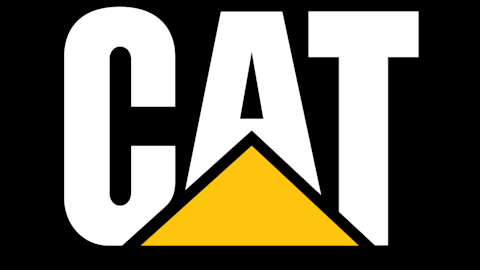As a new filing with the Securities and Exchange Commission showed, the Bill & Melinda Gates Foundation Trust has started to successfully implement its sales plan of Berkshire Hathaway Inc. (NYSE:BRK.B) class B shares announced in January, 2014. The foundation, run by Michael Larson, has sold some 3.44 million shares between February 2 and April 1 of this year, in multiple transactions at an average price of $146.49 per unit. Following the sale, the foundation holds 73.55 million shares of Berkshire Hathaway Inc. (NYSE:BRK.B)’s Class B stock. In addition, Bill Gates owns around 6.53 million class B shares through class A shares owned directly by him through his investment arm, Cascade Investment.

The Bill and Melinda Gates Foundation Trust sold shares under its Rule 10b5-1 sales plan in order to facilitate compliance with federal excise tax rules that limit excess business holdings by private foundations, the filing added. According to a previous filing, the foundation planned to sell 65 million shares of Berkshire Hathaway Inc. (NYSE:BRK.B)’s class B stock by the end of June, 2017.
Even though the Trust is a charitable organization, we follow its activity along with over 700 other investment firms, because it holds a vast equity portfolio that is valued at almost $20 billion (as of the end of 2014). Moreover, the foundation is run by Michael Larson, who also manages Cascade Investment. Mr. Larson is the man who helps Mr. Gates stay at the top of the list of the richest people on the planet (Mr. Gates’ net worth is currently estimated at $79.6 billion). Since 1994 when Mr. Larson took over managing Mr. Gates’ investment firm, his net worth has surged from around $5.0 billion to its present value. A former bond-fund manager, Mr. Larson uses a pretty conservative approach when it comes to picking stocks and this has allowed him to generate steady returns over the years.
We are interested in Mr. Larson’s skills in picking stocks alongside other great investors that we follow mainly because of their positions in small-cap stocks. These companies, with a market cap below $5 billion, are part of our small-cap strategy, which during the last 2.5 years generated returns of 132% and beat the market by 79 percentage points. The strategy involves picking the most popular small-cap picks among the funds that we track, because we have seen that these companies can help a retail investor exploit pricing inefficiencies that are less likely to happen in the mid and large-cap space, with companies being more popular and more-widely followed as a result. So far this strategy has worked extremely well, which was also confirmed by backtests that were conducted for the period between 1999 and 2012 (read more details about our backtests here).
Nevertheless, let’s take a closer look at Bill & Melinda Gates Foundation Trust’s equity portfolio from the latest 13F filing. It showed a total of 19 long positions held as of the end of 2014. Even though the Trust has generated steady returns over the years, its first-quarter performance looks a little bleak, judging from the returns of the companies in its equity portfolio. As we analyzed the data of its 18 stocks with a market capitalization of over $1.0 billion from the Trust’s 13F, we found that they had a negative average return that amounted to 3% during the first three months of 2015, versus the gain of the S&P 500 ETF (SPY) of 0.9%. The main impact on this loss was the 3.88% decline of Berkshire Hathaway Inc. (NYSE:BRK.B), in which the fund’s stake amasses almost 60% of its value. However, the fund’s other two top positions, represented by Canadian National Railway (USA) (NYSE:CNI) and Caterpillar Inc. (NYSE:CAT), don’t have much to show, as both stocks lost 2.61% and 11.85% respectively.
In Canadian National Railway (USA) (NYSE:CNI), the foundation holds 17.13 million shares as of the end of 2014, the value of the stake amounting to $1.18 billion. In this way, the position is not only the second-largest in the Trust’s equity portfolio, but is also the largest held by a shareholder among the funds that we track, both in size and portfolio allocation (5.9%), making it the most bullish investor among those that we track. Despite a minor setback during the first quarter, the stock of Canadian National Railway (USA) (NYSE:CNI) is well-positioned for long-term investment. The stock gained more than 60% in the last three years and its last financial results show a steady growth in revenue and profits. This is why Canadian National Railway (USA) (NYSE:CNI) is also included in the equity portfolios of 21 other funds among those that we track, including John Armitage’s Egerton Capital Limited, David E. Shaw‘s D.E. Shaw, and Ken Fisher’s Fisher Asset Management.
The stock of Caterpillar Inc. (NYSE:CAT) had an even worse performance, but it didn’t take investors as a surprise. In fact, Caterpillar ranked as one of the least popular Dow stocks among the funds that we track in the latest round of 13F filings. In addition, notorious short-seller Jim Chanos said in an interview that the company is in trouble mainly because two of the three industries in which it is involved, mining and energy, are in trouble. The fact that Caterpillar Inc. (NYSE:CAT) is not doing so well can also be seen from the company’s financial results, which show a significant slump in revenues since 2012 and a drop of both EBITDA and net profit. Nevertheless, two billionaire investors, David Shaw and Ken Griffin boosted their stakes in Caterpillar Inc. (NYSE:CAT) during the last quarter of 2014 to 592,500 shares and 552,800 shares, respectively, although both positions amass only 0.06% of their equity portfolios.
Disclosure: None




